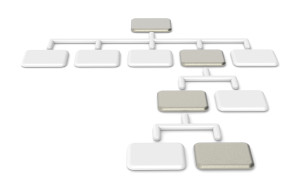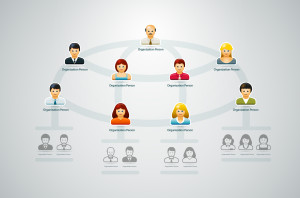The work of H.R. is continuously changing. Not only has the Human Resources function been evolving to become a stronger,  strategic partner to the business, but new priorities continue to shape what we do and how we do it. Metrics, Analytics, Workforce Planning, Succession Planning, Job Evaluation, Job Design, Recruiting, Compensation, Benefits, Rewards — these are just a few examples of the many important areas of focus for H.R. How can leaders identify an organizational structure that will best enable H.R. to most positively impact business performance and sustainability?
strategic partner to the business, but new priorities continue to shape what we do and how we do it. Metrics, Analytics, Workforce Planning, Succession Planning, Job Evaluation, Job Design, Recruiting, Compensation, Benefits, Rewards — these are just a few examples of the many important areas of focus for H.R. How can leaders identify an organizational structure that will best enable H.R. to most positively impact business performance and sustainability?

An organizational structure is the framework of the department. It lays out and defines the function’s priorities through design of positions with generalist and/or specialist roles, indicates reporting relationships and the fit of each person in the big picture, and establishes decision making as centralized or decentralized. Effective implementation of an organizational structure requires clarity of work responsibilities to enable staff to work well together and to jointly manage overlapping duties and hand-offs with one another.

An effective organizational structure has its roots in making a positive impact to the business and, therefore, is aligned with the business strategy. It flows with the company culture. And, it is designed to attract and retain high performing people, through creation of positions that leverage their highest skills and provide development and growth for your staff, ensuring meaningful work and a sense of purpose from the present into the future.
Researching trends can help us to anticipate business needs and identify our opportunities to make a difference, to make meaningful contributions to the business. SHRM has Special Expertise Panels who have been developing an annual publication about future trends, the most recent being “Future Insights: The Top Trends for 2014.” This publication identifies organization needs as well as trends in the business environment. Following are examples:
Business Needs:
- Developing 5 generations of workers, providing them with the tools they need to be effective
- Engaging and developing technical experts with high potential into senior leaders who contribute the business’ value proposition
- Developing and coaching line managers to become more proactive in managing and coaching talent
- Building leaders’ skills in communication, building employee motivation, and understanding and respecting cultural differences
- Designing business organizational structures and managing change as business needs become increasingly complex and subject to change
- Integrating career planning (see our article about career pathing) with workforce planning and employee engagement to enable employees to identify and choose career paths and job opportunities
- Leveraging decision support tools, analytics, metrics and models to make “big data” more useful in managing and developing the workforce
- Apply mobile and other advancing technologies to provide training and development on demand
Trends:
- Economic uncertainty
- Continuing change due to new technologies developments
- Skill-gaps and increasing needs for skilled talent
- Emphasis on effective measures of performance
There are several organization structures that are typical in today’s H.R. departments, some simple, others complex.
How can leaders determine which structure will most positively impact the business? How can H.R. employees and job candidates determine which structure will best enable them to achieve their career goals? Let’s look at differences between some typical organizational charts.
Some popular H.R. organization structures in use today include the following structural characteristics:
- Shared Services rooted in technology
- Centers of Expertise/Excellence and embedded Business Partners
- Generalists under the leadership of H.R. Managers, Directors, VPs
- Corporate H.R. Functions who “push” initiatives down and across through Division HR teams
- Matrix environments
- Centralized decision making
- Decentralized decision making
H.R.'s organizational structure matters because it is the function's framework, aligning resources with priorities defined in the business strategy, and embodying the organization's culture. The structure directly impacts the company's ability to attract, engage and retain top H.R. talent. Subsequently, the work of H.R., as performed by its staff, impacts business success into the future. Its impact is within and beyond the H.R. function itself.
You and I have experienced a variety of H.R. organization structures. Reflect on the structures in which you’ve worked; in your opinion, what type of structure has been most effective? Which will be most effective for the future? What are the pros and cons of the organization structures you’ve experienced? How can H.R. leaders build an organization structure that will enable the department to make increasingly significant contributions to the business strategy, while engaging and retaining the best H.R. talent?
